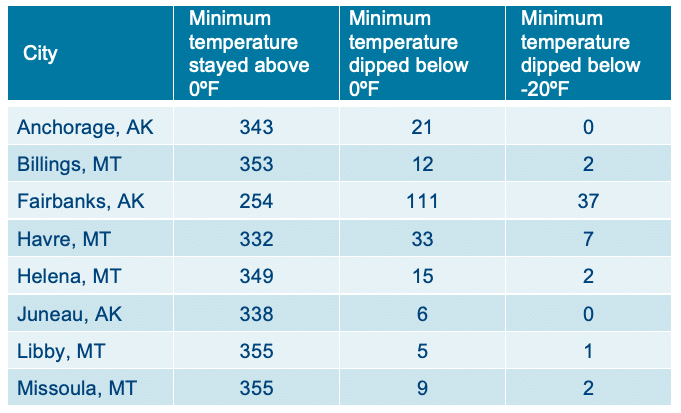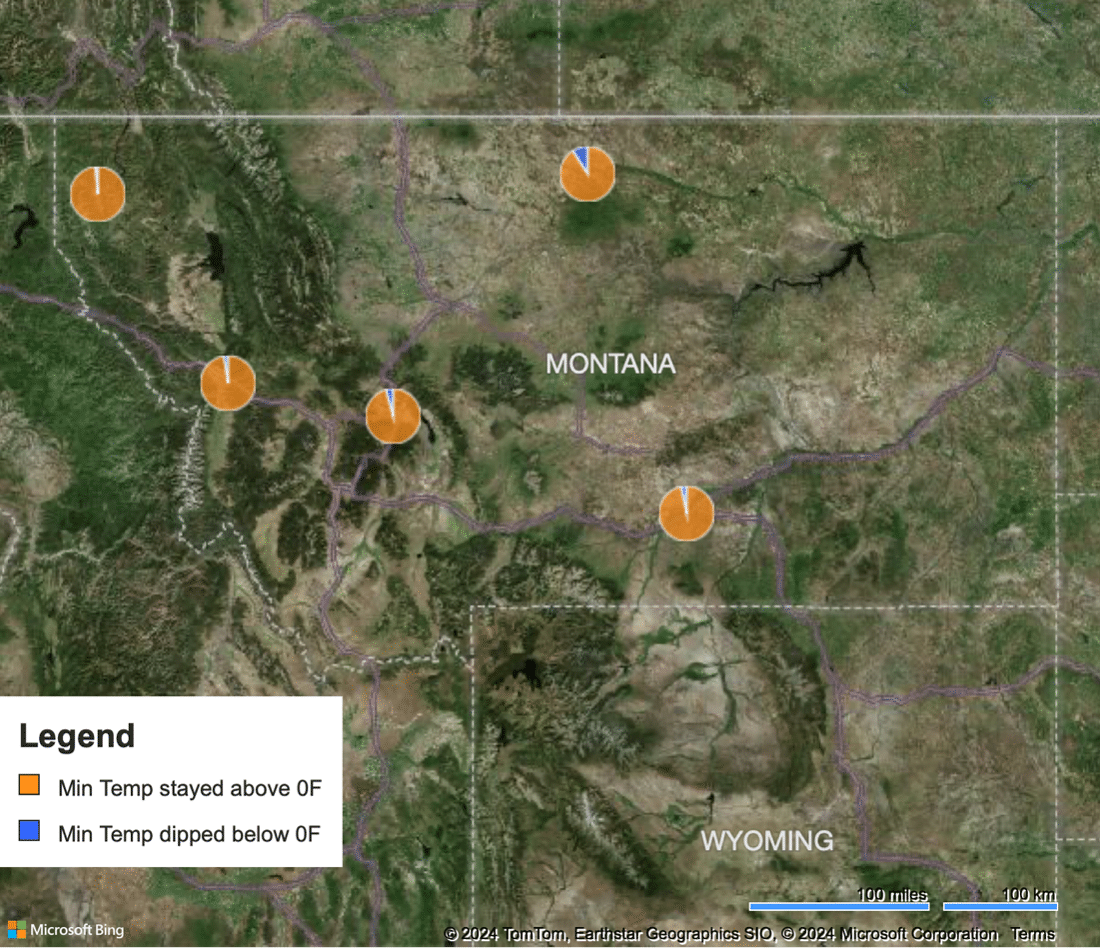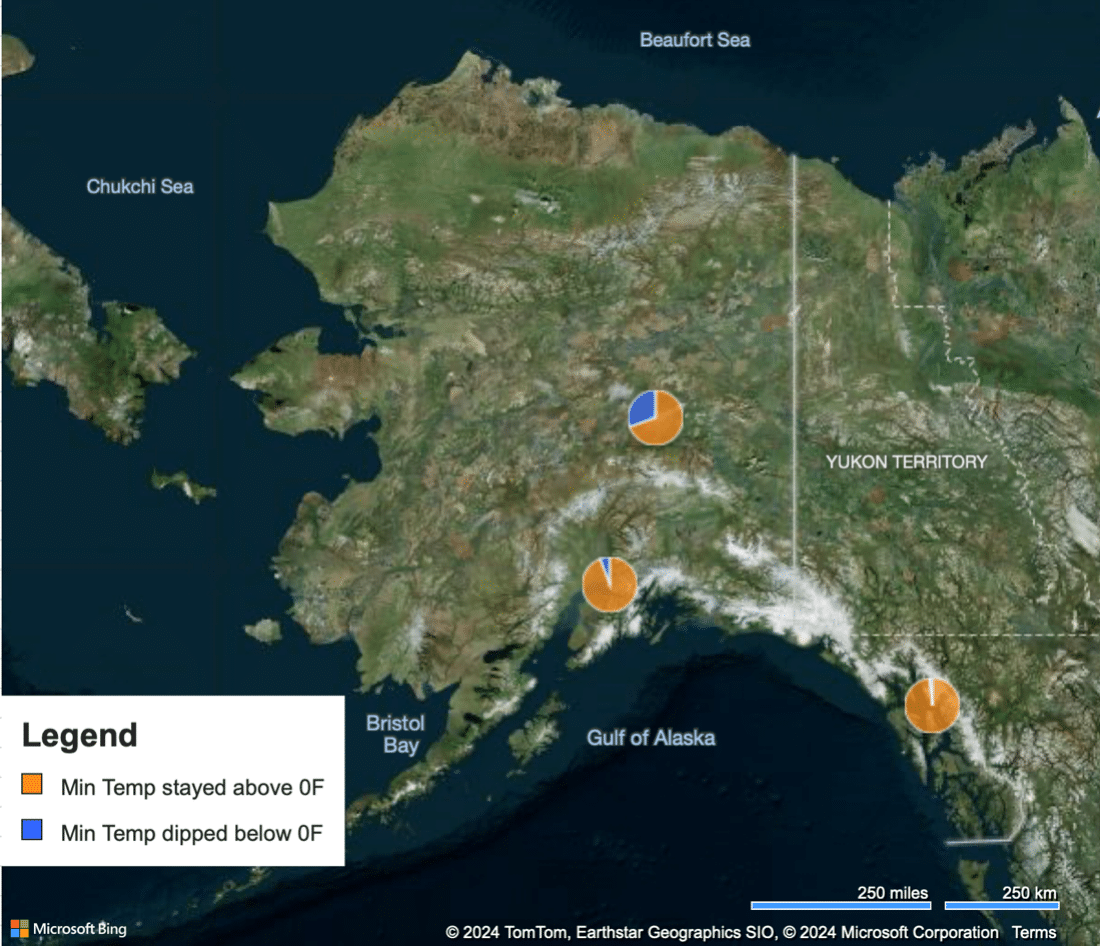I live in Missoula, Montana, a small college town tucked into the Rocky Mountains. We’re known for our outdoor access, not for our burgeoning restaurant scene. So when a new spot opens, there’s usually a lot of buzz. It’s exciting to have new restaurants open in town, but if you’re like me you approach with caution. I like to hear from a few folks first before going myself. Once I get a thumbs up or two, I’m ready to look at the menu and give it a try.
Well, there’s a lot of buzz right now in the energy world about heat pumps as an option to both heat and cool indoor spaces. The technology has been shown to be a great fit for warm and mild climates, but what about in cold climates? Places like Montana, where the daily low temperatures in the winter regularly dip below zero? For a lot of people, living in a cold climate seems to be a non-starter for considering heat pumps. Is there a reason to think otherwise?
To answer this question, I spoke with professionals working in the industry in Montana and Alaska, two of the colder places I could think of. I wanted to get a sense of their experiences and to ground truth the studies and FAQ documents I’ve seen out there. Collectively, the folks I interviewed represent decades of experience in the HVAC and building industry. Spoiler alert: There was resounding support for heat pump performance, and some other interesting takeaways as well. Here’s what I learned.
What’s the Buzz All About?
As my colleagues have discussed, heat pumps are a continually improving technology that is increasingly popular. The technology is highly efficient, provides both heating and cooling, and can be very cost-effective. That’s a win-win-win! But does the performance back up the buzz? In speaking with the pros, I received a resounding yes. One contractor told me how skeptical and opposed to heat pumps he was at first but installed one for his own home with the intention to truly test its limits. He installed it in a room three times bigger, and in a climate much colder, than it was rated for. He expected to be able to break it, to demonstrate how heat pump technology doesn’t work. Instead, it operated efficiently down to -15°F (even though the model was only rated to 5°F), cut his energy bills by 50% by the third month, and the room was warmer and more uniform in temperature. From that moment on he was converted. As the years have rolled on, he has heard more of the same from his clients.
Do Heat Pumps Work When It’s Super Cold?
This was the big question I asked during my interviews: “Shoot me straight: Do heat pumps hold up in places like Montana and Alaska, where winter temperatures drop below 0 on the regular?” Another resounding yes.
Don’t get me wrong: 20 degrees below zero is mighty cold. But each of the pros I spoke to brought up the same thing: How often does that actually happen? I looked at data for some pretty cold places, shown in the table and images below. The table shows the number of days during which the temperature stayed above 0°F, dipped below 0°F, and dipped below -20°F (the lowest operating rating for many heat pump models). In the images below, the days above 0°F are in orange and the days below 0°F are in blue. The numbers show that the vast majority of days fall within the efficient operating range of a heat pump, even in the coldest of places.

Three-Year Average of Temperature Data for September 2020 through August 2023 for Cold-Climate Cities in Alaska and Montana (Data source: National Oceanic and Atmospheric Administration)

Comparison of Minimum Temperatures for Cities in Montana, September 2020 through August 2023

Comparison of Minimum Temperatures for Cities in Alaska, September 2020 through August 2023
What About Backup Heat?
It’s true that heat pumps installed in very cold climates might require backup heating for the coldest of days. Does this mean you shouldn’t get a heat pump at all? Of course not. The pros I spoke to all agreed, and framed it this way: Ask yourself, “What if I only needed to run my heat/furnace/boiler system for a total of 5, or 10, or maybe 15 days of the year, and not even on full blast? And what’s more, the rest of the year I had consistent, efficient heating and cooling?” That’s an exciting prospect.
It’s also important to keep in mind the relative performance of the heat pump compared to the backup heating system. For example, one contractor shared a story about operating heat pumps in Montana during a cold snap where the low temperatures reached -35°F. Yes, the heat pumps lost some efficiency — but so did the furnaces! Temperatures that low are going to impact the heating system regardless of what it is. This is important to keep in mind when making a comparison between systems.
Will the Room Feel Different?
According to the pros, heat pumps make rooms feel a little different than we’re currently used to — which is a good thing. Heat pumps run differently than typical furnaces. They make constant but much smaller corrections to the temperature, as opposed to blasting hot air occasionally. These smaller corrections keep the temperature in the room more consistent and, unlike forced air and even baseboard heating, they reduce “spot heating,” which happens when certain parts of the room are much warmer (or colder) than others. Heat pumps create a more comfortable and uniform feel throughout the room.
So, Will a Heat Pump Work for You?
They just might! The conversations I had confirmed that heat pumps work, and work well, in very cold climates. Just like any other heating system, the ultimate design, make and model, and other details of your installation must be fit to your needs. What I’ve learned in talking with the pros is that living in a cold climate is no reason to write these off as an option for a highly efficient, cost-effective heating and cooling system. Having asked around, I’m fully ready to look at the menu and give them a try.

